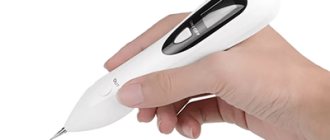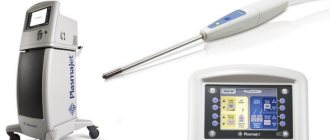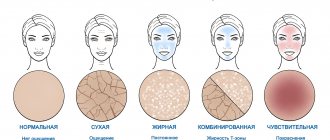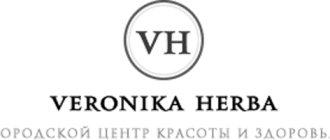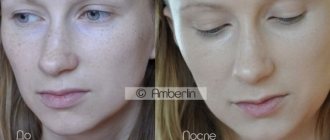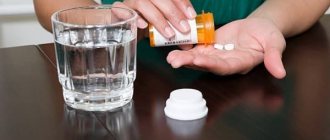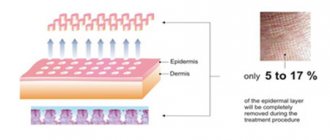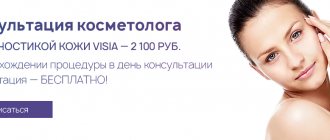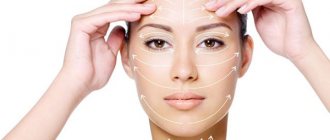Many women begin to think about cosmetic procedures when the first wrinkles or age spots appear on the face, and the skin becomes flaccid. To maintain beauty, it is not necessary to undergo injections. For professional and home use there is Plasma Liner - a cosmetology device, reviews of which confirm its effectiveness. However, there are other devices with a similar effect. Find out what their features and differences are, as well as who is suitable for plasma facial skin rejuvenation.
Description of the procedure
Non-surgical plasma lifting technology is a new step in the development of cosmetology. You don't have to donate blood or overcome your fear of injections. Special devices painlessly affect the skin using plasma current, which starts the process of renewal of the dermis.
Externally, the devices resemble compact pens. Argon plasma is formed at their tips (as a result of a gas flash). Under the influence of high temperature, ionization of gaseous substances begins. Compounds that are safe for humans appear and penetrate deep into the dermis. In this case, the skin is not damaged, and the plasma works in several directions:
- acts with light waves that contain a minimal amount of destructive ultraviolet radiation;
- has a thermal effect, stimulating collagen production. Where plasma acts, the dermis instantly warms up to 40 °C. Its outer layer is not damaged, and the patient feels warm within a few seconds;
- has a laser peeling effect.
Thus, plasma promotes the regeneration of the deep layers of the skin and smoothes the epidermis. Thanks to the versatile effects, the result is noticeable even after the first procedure. The skin looks more youthful and well-groomed.
2) Plasma devices are not even a household device that can be used in cosmetology.
There is a loophole in the law that allows the use in medical practice of devices that are household, and not medical. The border between these two categories is very thin; it is generally accepted that everything that does not violate the dermal layer and does not affect the skin and subcutaneous tissues can be classified as household appliances. As an example, various electromechanical simulators are often cited, which are used for all kinds of massages and weight loss in beauty salons.
Household appliances do not need to be registered with Roszdravnadzor, but it is necessary to obtain an expert opinion that the device is a household appliance.
As we understand, plasma-liners damage at least the surface layer of the skin, so they cannot be classified as household products at all! There is no point in further discussion.
Indications for use
Typically, plasma rejuvenation is required for women who have reached the “Balzac age” - have crossed the 30-year mark. It is in the 4th decade that the first skin changes usually become visible. However, everything is individual, so you can use a plasma liner at an earlier age. After all, it is effective not only for rejuvenation. There are no contraindications from device manufacturers in this regard.
Plasmajet will help cope with the following problems:
- drooping skin of the upper eyelids, bruises and bags under the eyes (non-contact blepharoplasty);
- wrinkles between the eyebrows, around the mouth, in the corners of the eyes;
- freckles and age spots;
- scars;
- eczema, rosacea;
- blackheads, acne;
- seborrhea;
- psoriasis;
- keratosis.
Attention! The plasma rejuvenation method is not universal. It will not help get rid of too deep wrinkles, very sagging skin, or age spots that appear with age.
Possibilities of plasma techniques. Evidence-based medicine
Impact on the epidermis and dermis
Heating of tissues proceeds evenly, the layer of old damaged epidermis serves as a “biological protective bandage”, and as new epithelium forms, the old one peels off. In addition, it allows the treatment of skin of any phototype and reduces the risk of side effects such as scars, infections and depigmentation. Even with high-energy treatments, neoepithelialization occurs quickly and is usually complete within 5–7 days after the procedure.
Immediately after treatment, contraction of collagen fibers is noted (in those areas where the heating temperature exceeded 60 0C) and reactions to heat shock, then gradual destruction of damaged structures and activation of neocollagenesis and neoelastogenesis occurs. Dermal remodeling processes continue for at least 3 months after treatment (Gonzalez et al. 2008).
American researchers evaluated the improvement in skin texture, tone, reduction of fine lines, and dyschromia. To do this, they took 2mm biopsy samples before and after 90 days of treatment. Follow-up was performed at 2, 5, 7, 30, and 90 after treatment to monitor recovery, improvement, and any subsequent complications.
Histological examination showed regenerative activity in the epidermis and dermis, collagen remodeling (Kilmer et al. 2007).
In another study, eight volunteers were treated every 3 weeks for 3 treatments using settings ranging from 1.2 to 1.8 J. Epidermal quality, side effects, and erythema were recorded before each subsequent treatment. Skin biopsy specimens were obtained from 6 patients before treatment and 90 days after treatment.
Three months after treatment, researchers found a 37% reduction in facial wrinkles, and study participants reported a 68% improvement in overall skin appearance.
Histological evaluation 3 months after treatment revealed a band of new collagen at the dermoepidermal junction with less dense elastin in the dermis. The average depth of new collagen was 72.3 µm (Bogle et al. 2007).
Potter showed that plasma reduced wrinkles and lines by an average of 24% after 6 months, and acne marks reduced by 23% after 6 months.
Acceleration of wound healing
Low-temperature plasma affects galectin-1 and the Smad signaling pathway, which are responsible for the wound healing process. Scientists from Japan in 2016 showed that immediately after the start of exposure, a membrane structure was formed on the surface of the wound, in which, according to immunoelectron microscopy, galectins were localized. After treatment, the number of galectins was increased, while they were suppressed by electrocoagulation (Akimoto et al 2016).
Activation of growth factors
South Korean researchers obtained an interesting effect of growth factor induction after exposure to low-temperature plasma and increased expression of angiogenic growth factor in skin fibroblasts.
Their data showed that fibroblast viability was reduced at 6 and 24 hours after plasma treatment by as little as 5 minutes, fibroblast migration was significantly increased at 6 and 24 hours in healing tests, cytokine expression was significantly altered, and regulatory growth factors were induced after treatment.
Plasma administration significantly accelerated the expression of HIF1α, an upstream regulator of angiogenesis (Cui et al. 2017).
Post-acne correction
The antimicrobial activity of plasma has been demonstrated not only in laboratory animals, but also in randomized controlled trials in humans: two minutes of wound debridement with cold argon plasma showed a significant reduction in the number of both gram-negative and gram-positive bacteria in wounds (Isbary et al. 2012).
American doctors showed in their study that plasma can be successfully used in the correction of acne scars. They selected patients with Fitzpatrick I-III skin and performed one procedure on them. Evaluations showed that about a third of the treated areas showed improvement after 6 months. After 4-6 days, most patients observed secondary epithelialization without serious side effects (Gonzalez et al. 2008).
A group of Asian scientists also conducted an experiment on patients with traumatic scars.
They underwent plasma treatment every month for 3 months. Nearly half of the subjects experienced a 50% improvement in their traumatic scars. All patients tolerated treatment with minimal pain, with only temporary localized hyperpigmentation observed in a few patients, which resolved after 3 months (Kono T. et al. 2009).
When comparing fractional microplasma RF technology and fractional CO2 laser for eliminating post-acne scars. One side of the patients’ faces (a total of 33 people with skin phototypes III and IV participated) was treated with plasma, the other with a laser, 3 procedures of each type. The depth of the damage in the first case varied between 120–150 µm, and the diameter was 150–180 µm. The fractional CO2 laser formed lesions with a depth of 300–400 µm and a diameter of 100–120 µm. The thermal damage zone around the ablation well was wider in the case of microplasma (Fig. 1)
.
Rice.
1. Histological changes immediately after treatment of atrophic post-acne scars using microplasma RF technology (left) and fractional CO2 laser (right).
Both methods significantly and almost equally reduced the severity of post-acne scars - in the case of plasma (improvement by 56.4%) and 59.2% for the CO2 laser according to the ECCA scale. At the same time, in response to laser exposure, 12 people (36.4%) developed post-inflammatory hyperpigmentation, and no such complications were recorded from microplasma treatment (Zhang Z, 2013).
Plasma can be used on skin of any phototype, since its effect does not depend on the presence of chromophores in the skin. Hyperpigmentation, which can occur after procedures, generally occurs less frequently than, for example, with laser treatment. The risk of infection and scarring is also significantly reduced.
CO2 lasers form lesions that are more uniform in depth and diameter, while when using plasma, these dimensions can vary. In addition, lasers provide deeper effects than plasma. However, it is the more superficial effects of plasma treatment that may be one of the reasons for the lower risk of post-inflammatory hyperpigmentation (Li X, 2015).
Plasma has proven itself as an effective method of skin rejuvenation not only of the face, but also of the body. The Americans assessed the skin in the neck, chest and dorsal surface of the arms - a total of 30 areas in 10 patients. Clinical assessments of skin texture, pigmentation, wrinkle severity, and side effects were performed immediately and at 4, 7, 14, 30, and 90 days after treatment.
Average clinical improvements of 57%, 48%, and 41% were observed in the chest, arms, and arms, respectively. The depth of wrinkles and hyperpigmentation decreased and the smoothness of the skin increased (Alster, Konda 2007).
Can I do it at home?
The device should only be used by a person with specialized education who knows the anatomy of the face and the features of the plasma rejuvenation technique.
For this reason, companies that sell plasma liners offer preliminary training in how to operate the device. Some distributors do not even sell devices to customers who have not completed a special course.
If you invite a qualified cosmetologist who performs procedures at home, he will be able to carry out the necessary manipulations. But remember: mistakes during plasma lifting are fraught with health problems. Therefore, take the time to go to the clinic, where an experienced professional will supervise all stages of the process.
There are relatively inexpensive devices for home use - for example, the Beauco Plasma Pen (costing about 10 thousand rubles). However, their use, as in the case of a plasma liner, also requires special knowledge.
3) Manufacturers do not guarantee anything other than the performance of the device.
Let's start with foreign manufacturers: in the best case, when you purchase, you will receive a piece of paper with a foreign certificate in Korean, Chinese or another language and a seal. The technical characteristics of a medical device must indicate the power, pulse duration, depth of penetration into tissue, and point diameter. There is no such information in any instructions, we translated it. This means the impact is unpredictable.
A number of foreign devices have a certificate of conformity of the Eurasian Economic Union, which was issued by the distributor (individual entrepreneur or LLC) and notifies that the product complies with safety standards for perfumery and cosmetic products. Such a certificate is at least somehow related to cosmetology, but it regulates exclusively technical and component parameters, not medical parameters.
An example of such a declaration:
In a number of cases, outright forgeries have been recorded: GOST 9001-2015, indicated on websites and in accompanying information, does not notify the quality of products, but confirms that the organization is effectively functioning in a management system for the quality of products and services produced in the organization. This document is aimed at improving the company’s image, distinguishing it from competitors, but most importantly, allowing the company to enter the international market.
There is a company in Russia that produces a domestic plasma device - Plasma Pen, maybe everything is fine with its guarantees, and the registration certificate is only a matter of time?
The company claims that all products have all certificates and licenses, but upon closer examination, a funny fact emerges: the needles for the plasma device (consumable material) have a registration certificate from Roszdravnadzor and they are a medical product (!!!), while the device - no!
The device itself is issued with: a certificate of conformity (in which Rostest confirms that the device complies with the Technical Specifications of the manufacturer itself (TU 26.60.11-001-39562978-2017) and a certificate of conformity of the Eurasian Economic Union (which declares the device’s compliance with the standards of “safety of low-voltage equipment” Do you get the idea? - / “children’s flashlight” / “electric shocker” (or any other low-voltage device) and declares that it is made according to its own specifications. Where is the medicine here? - well, of course: needles! Certified as medical products. That The plasma itself is collected at the tip of the needle!
Why doesn’t it occur to anyone to use a wood burning device for cosmetic purposes? (Oh... that was a bad idea...)
If you stick a medical needle into a burning device, will it become suitable for cosmetology?
Whether these documents are enough for MEDICAL is up to you to decide for yourself.
Types of devices
The most popular models of devices for plasma manipulations:
- Plasmajet Derma . A device produced by the English company Plasma Surgical heats the lower layers of the dermis to 50 °C. The patient does not feel pain, but a pleasant breeze of a light breeze. No anesthesia is required. Plasmajet m103 improves skin tone, improves its color and stimulates collagen production - this process actively continues for a year after the procedure. Ions destroy pathogens and have a beneficial effect on blood microcirculation. In addition to cosmetology, the device is used in surgery, dermatology, and gynecology.
- PlasM . The German device makes the skin fresher and younger, removes the consequences of unsuccessful tattooing, tightens the lips, chin, cheeks, performs a mini-lift, and eliminates wrinkles. The buyer receives free training. The company provides service during the warranty period and after it.
- JETT PLASMA LIFT or Jet plasma lift medical . The Czech device enhances the skin's immunity and strengthens it. Effective against expression lines and age wrinkles. Helps reduce stretch marks, scars, age spots, rosacea, acne. JET medical is used on the face, chest, hands. The effect of application is noticeable already on the 2nd day and increases over the course of six months. About a week should pass between procedures (between the 1st and 2nd - 3 days).
- PLAXPOT . It has increased electrical safety and a color display that expands the viewing angle. Does not damage tissue and triggers skin renewal mechanism. Provides long-term results and fights wrinkles, freckles, acne, seborrheic warts and other blemishes. Removes tattoos and tightens eyelid skin. The device is assembled in Korea. It is considered multifunctional because it is also used in dentistry.
- Plasma liner . One of the most popular devices for contactless rejuvenation using plasma. Manufactured in Germany and has certificates of conformity relevant for Europe and Russia. Unlike inexpensive devices, Plasma Liner does not burn the skin, but synthesizes collagen production. The result lasts about 2 years. When using, an anesthetic cream must be applied. The patient feels an instant surge of warmth in the place where the cosmetologist works with the plasma liner. The dermis is immediately cooled, so the device does not harm its deeper layers. The range of applications of the plasma liner is wide: from smoothing wrinkles and tightening the skin on the face, chest, and abdomen to eliminating papillomas and safe blepharoplasty.
You can purchase any plasma lifting device via the Internet on the official website of the distributor, as well as on online platforms that sell laboratory and medical equipment. The cost is clarified after submitting an application or calling the manager, often after registering for training. Not every person will be able to find out the amount of the plasma liner, but only a professional who has confirmed his qualifications.
Comparison of plasma current devices
| Chinese plasma machine from Aliexpress | Plasma Penсil™ V1. | Plasma Penсil™ V2 | Beauty Monster | Plasma Zan | Plasma Pen. Pelsar. Maglev. Medi Plasm. PLASMATIC. MBT-Plasma | Plasma Liner. PlasM. Planoplas | |
| Made in Russia. Chinese and Russian components | Made in Russia. Russian components | Made in Korea. (a plant in China was also discovered) | Made in the Czech Republic? (the plant in the Czech Republic could not be found, but was found in China) | Made in Germany? Identical devices under different brands. (the plant in Germany could not be found) | Made in Germany? Identical devices under different brands. This device was not found on the website of the company declared in the certificate as a manufacturer. | ||
| Price, rub | 1.500 | 18.000 | 25.000 | 60.000 | 147.000 | from 80.000-180.000 | 250.000 |
| Ergonomics | No Inconvenient shape of the device. Difficulty pressing the START button | Yes Compact. Convenient to hold in your hand during the procedure. | Yes Compact. Convenient to hold in your hand during the procedure. | Yes Compact. Convenient to hold in your hand during the procedure. | Yes Compact. Convenient to hold in your hand during the procedure. | No Too bulky and heavy. Doesn't fit in your hand. Not convenient to use. | Yes Compact. Convenient to hold in your hand during the procedure. |
| Plasma power adjustment | 2 levels | 5 levels | 6 levels | 4x4 levels | 4 levels | 2 levels | No plasma power adjustment |
| Battery | There is | There is | There is | No | No | There is | No |
| Nutrition | Network adapter | Network adapter | Wireless charger | Network adapter | Network adapter | Network adapter | Network adapter |
| Fast battery charging mode | No | No | Yes | No | No | No | No |
| Plasma stability | Not stable Discharges of different powers are delivered. | Stable Plasma power drops by no more than 10% when the battery is discharged to 80-90% | Stable Plasma power is maintained until the battery is completely discharged | Stable | Stable | Stable Plasma power drops by 20-30% when the battery is discharged to 70-80% | Stable |
| Plasma power on a 10-point scale | 7 | 8 | 10 | 8 | 7 | 8 | 7 |
| Backlight | There is | No | There is | No | No | There is | No |
| overheat protection | No | No | There is In cases of overheating, it automatically turns off. | No | No | No | No |
| Automatic shutdown | No | No | Eat It will automatically turn off if the device is not operated for 10 minutes. | No | No | No | No |
| Nozzles and needles included. | 10 pieces. non-standard disposable needles without markings. Can only be purchased in China. Presumably medical steel. | 5 pieces. disposable needles made of copper steel. 1 PC. tip adapter for needles made of copper steel. 1 PC. reusable cone-shaped tip made of copper steel. Many standard coagulator needles are also suitable. | 10 pieces. disposable needles made of copper steel. 3 pcs. reusable cone-shaped tips made of copper steel. 1 PC. adapter for needles made of copper steel. Many standard coagulator needles are also suitable. Additionally, you can purchase fractional (“plasma shower”) and thermal nozzles. | 1 PC. cone nozzle, 1 PC. yellow metal needle. The composition of the metal for the needles is unknown. Round fractional nozzle 1 pc. Round thermal nozzle 1 pc. | 1 PC. cone nozzle, 1 PC. yellow metal needle. The composition of the metal for the needles is unknown. | 3 pcs. disposable needles, presumably made of copper steel. 1 PC. conical nozzle made of yellow metal. The composition of the metal for the needles is unknown. | 10 pieces. white metal needles. There is no marking of what metal they are made of. |
Stages of the procedure
The device is used in the following sequence:
- The specialist carefully cleanses the skin and determines where to use the device.
- Apply anesthetic ointment to the selected area.
- The cosmetologist brings the device to the face and applies it precisely to the skin. The duration of influence of the Plasma liner pulse is less than one second. At the site of use of the device, the dermis instantly contracts.
- The patient feels warm. There is no pain due to the anesthetic drug.
- The specialist sequentially treats the targeted area with a plasma liner.
- The process lasts from 15 to 30 minutes. Depends on the complexity of the problem and the area of the treated area.
Attention! The cost of one plasma lifting procedure ranges from 4,000 rubles for smoothing wrinkles to 15–20 thousand rubles for blepharoplasty. Moreover, in Voronezh or another regional city the price will be lower than in a Moscow clinic.
What is plasma
Photo by ShotPot: Pexels
Plasma is a gas whose composition, unlike standard stable gases, contains not only neutral molecules, but also free electrons, and positive and negative ions. And in some cases, plasma consists only of them.
Despite the different vector signs of particles, their number with both plus and minus is the same. In other words, the plasma charge is zero. This is called quasi-neutrality. At the same time, the plasma retains the ability to produce electric current. The gas transforms into plasma when a large amount of energy is transferred to it, which strips electrons from the atoms.
This is how the formation of the fourth state of matter occurs: after solid, liquid and gaseous. This is a new aggregate reality.
The energy that is spent on this is correlated with the specific substance. The structure of the outer electron shells of its atoms matters: the easier an atom parts with an electron, the less energy is spent on its separation.
Under natural conditions, the source of such energy is heating, but plasma can be obtained in other ways. There are two types of plasma:
- high temperature - almost completely ionized, like on the Sun. It occurs during a lightning discharge or during thermonuclear fusion. This is a classic plasma gas or fourth state of matter;
- low temperature - with a degree of ionization of only 1%. It is formed when gas is exposed to electric current, which accelerates electrons, which in turn ionize atoms. It is this kind of plasma that medicine and cosmetology encounter in practice. In such plasma, the temperature fluctuates around 35-40 degrees, which is why it is also called cold.
Healing period
Immediately after the procedure, redness may appear on the face, which usually disappears within an hour. Sometimes swelling occurs. You'll have to wait a couple of days until it disappears. In the area where the cosmetologist worked with a plasma liner, small dots appear - in those places where the specialist applied an impulse to the skin. They become covered with thin crusts, which fall off on their own after 5–10 days. The redness also goes away after a few days.
The first 3–5 days after plasma lifting you need to properly care for your skin:
- do not wet the treated area with water or special wound healing products;
- temporarily abandon decorative cosmetics;
- avoid visiting a solarium, bathhouse, beach, swimming pool - anything associated with high humidity and elevated temperature;
- after the crusts fall off, use sunscreen with filter 50+ for 3 months;
- wear sunglasses if you have undergone plasma blepharoplasty or smooth out wrinkles around the eyes.
Important! Mesotherapy, fillers, Botox - all this is possible, but only 1.5 months after rejuvenation with a plasma liner.
Depending on the complexity of the situation, 5–6 procedures may be required to eliminate defects. The break between them is usually 3 weeks. The first positive changes become noticeable after the first plasma lifting. A couple of weeks after the start of the procedures, the effect intensifies. The maximum result is observed after 3–4 months and lasts for 1–2 years.
Plasma facial rejuvenation – reviews with before and after photos
Reviews about the plasma facial rejuvenation procedure are mostly positive. Negative customer reviews are usually associated with the peculiarities of the skin (for example, very thin and dry skin), the expectation of an instant lifting effect after one procedure.
“I had the plasmaliner treatment done 2 weeks after the mechanical peeling. I liked the effect, despite the fact that redness, swelling, and severe flaking of the skin persisted for about 3 days. “I repeated the procedure and now I’m happy with my face: the crow’s feet near the eyes smoothed out, pigmentation went away, and my face began to look rested.” Irina Petrova, 34 years old.
“I can’t say that I’m directly delighted with the procedure, because I love instant results. After the plasma, temporary isolation was required, as there were unpleasant light brown marks on the face from the effects of the device. But after 5 days, the skin really evened out its tone, became younger, and refreshed. I’ll try again in a month, maybe the same effect will appear.” Yaroslava Isarov, 31 years old.
“I’ve done everything I can to my face, but I avoid beauty injections and any radical intervention. The cosmetologist advised me to try treating the skin with a plasmaliner. I completed one session and am satisfied. The only negative is redness and flaking for almost a week. I had to stay at home until it healed completely.” Olga Yashina, 36 years old.
Contraindications
Hardware plasma lifting is considered a safe procedure that does not harm the eyes and skin if everything is done by an experienced professional and the rules of rehabilitation are not neglected. However, the use of Plasma Liner has some health restrictions:
- purulent wounds;
- allergic rashes;
- oncology;
- acute inflammation of the skin at the site of the procedure;
- the presence of a pacemaker or other built-in devices, metal implants in the plasma rejuvenation area;
- cardiovascular diseases;
- diseases of the kidneys, liver, endocrine and respiratory systems;
- epilepsy;
- pregnancy, breastfeeding, menstruation - hormonal changes can reduce the effectiveness of the Plasma Liner.
If you have been injected with Botox or fillers, wait until at least 3 weeks have passed and only then sign up for the procedure.
What aesthetic problems can plasma current blepharoplasty solve?
Blepharoplasty is indicated in the following cases:
- scarring;
- complicated acne;
- genital warts;
- calluses;
- wrinkles;
- atheromas;
- hemangiomas;
- molluscum contagiosum;
- senile keratomas;
- tattoos;
- nevi;
- seborrhea;
- warts;
- papillomas.
A cosmetic procedure with a plasma current device is contraindicated if the patient suffers from cardiovascular and oncological diseases, has a tendency to form colloidal scars, is intolerant to anesthetics, has a blood clotting disorder, or wears a pacemaker.
Advantages and disadvantages
Advantages of plasma liner rejuvenation:
- safety;
- efficiency;
- noticeable effect after the first procedure;
- lasting results;
- painless use of the plasma liner;
- wide range of uses;
- prolonged effect.
The disadvantages include:
- an impressive list of contraindications;
- risk of complications;
- the high cost of using a plasma liner, especially if you need to perform several procedures;
- special care that a person needs after lifting.
Patient reviews
While the plasma liner is considered a new product, some users are skeptical about the information that the effect will be noticeable after the first use. The patient relies on the doctor's opinion.
There are doubts regarding the need for repeated procedures. The user believes that the plasma liner may not be very effective for blepharoplasty or wrinkle removal.
However, those who managed to evaluate the results on themselves or on loved ones speak enthusiastically about plasma rejuvenation.
At the same time, there are also negative opinions. The patient underwent non-surgical blepharoplasty at home. And although it was performed by a professional cosmetologist, it was not without pain during and after the process, as well as serious complications even after a repeat procedure.
To ensure that using the plasma liner leaves only positive impressions, do not experiment with the device at home. Trust the youth and beauty of your face to professionals. In this case, risks are minimized, since an experienced specialist controls the entire process. Do not forget about the importance of the rehabilitation period - here everything depends on how carefully you follow the recommendations of cosmetologists to consolidate a good result.
Possible negative consequences of plasma exposure
Despite the non-invasiveness of the rejuvenation procedure, the effect of the plasmaliner somehow affects the structure of the cells. Immediately after the manipulation, swelling and slight redness are observed. At the site of treatment with the device, the skin becomes covered with small light brown crusts, which disappear after 3-5 days. All symptoms go away without special treatment. Complications are indicated by the persistence of swelling and hyperemia for more than 3 days, increased discomfort, the addition of itching, and general malaise. If such signs appear, you should consult a cosmetologist to prescribe therapy.
Sometimes side effects are a consequence of the cosmetologist’s unprofessionalism, lack of experience and skills. Serious complications include bruises, severe hematomas, pigmentation and even burns. These consequences require mandatory treatment by a dermatologist, as they affect the final result and can cause scars.
To speed up the process of cell restoration, it is important to carefully care for your face throughout the entire rehabilitation period. Complete washing with care products is possible after complete healing of the epidermis. To moisturize, it is enough to irrigate the skin with micellar water from a spray bottle.
Any procedures after plasma rejuvenation are carried out 3-5 weeks later to prevent increased trauma to the skin. It is unacceptable to treat the skin with scrubs and other abrasive compounds to reduce peeling, as this can damage the dermis and cause the appearance of deep cosmetic defects.
